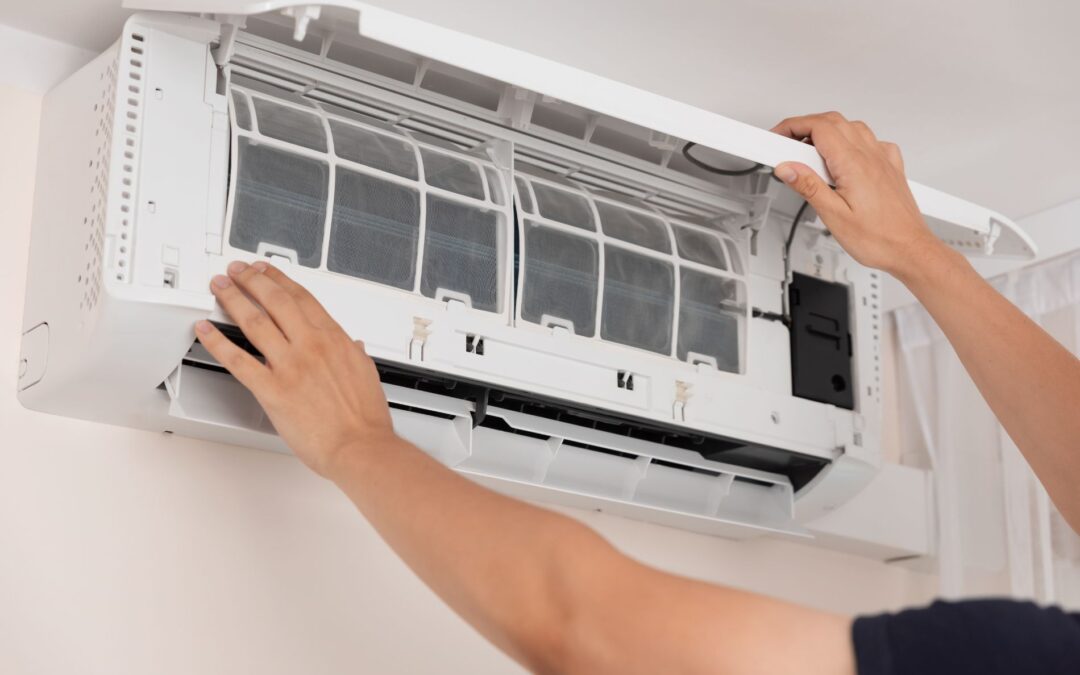When your home’s air conditioning starts putting out weaker air or cooling unevenly, it’s a signal that something’s off. Airflow problems can begin quietly and build slowly until your system can’t keep up with the heat. For homeowners in Aurora, that usually happens right in the middle of summer, when you need your AC the most. Getting ahead of airflow problems is key to keeping cool and avoiding bigger issues.
Poor airflow does more than make your rooms uncomfortable. It places extra strain on your system, which can lead to breakdowns, rising energy bills, and a shorter AC lifespan. Knowing what to look for and catching early warning signs gives you the best chance at fixing the problem before it worsens. Here’s how to recognize and take action on AC airflow concerns early, before they become expensive repairs.
Understanding AC Airflow Problems
Airflow plays a major role in how effectively your air conditioning system cools your space. When airflow drops, it often means that the home isn’t cooling evenly. You might notice some rooms feel stuffy while others stay chilly, or air just doesn’t feel strong coming out of the vents. These changes might seem small at first but can lead to bigger problems if left alone.
Here are common signs of airflow trouble:
– Weak air coming out of one or more vents
– Warm spots in parts of the house even when the AC is running
– Pressure imbalance causing doors to shut on their own
– Whistling or hissing sounds at vents
– A system that keeps cycling on and off without fully cooling
Each of these symptoms points to a disruption somewhere in the system that is preventing cooled air from moving smoothly through the ducts and into your living space. That disruption could be something simple, like a clogged filter, or more complex like a problem with the ductwork or blower motor. The key is not to ignore the symptoms, even if the AC is still running.
Let’s say a homeowner in Aurora noticed that their upstairs bedrooms weren’t cooling as well as the downstairs living room. At first, they assumed it was just because of the sun hitting the roof. But after checking the vents, they found that very little air was actually coming out of the upstairs registers. That led to a service call where a technician discovered that dirt and dust buildup had blocked significant portions of the duct system, slowing the airflow. The AC was running more than it needed to, raising energy usage and making the house uncomfortable.
Spotting airflow issues early helps maintain comfort and reduce wear on the system. It’s not just about fixing a minor annoyance. It can also help avoid major repairs when the system is under the most demand.
Common Causes of AC Airflow Problems
There are several causes that can limit airflow in a residential AC system. Most of them start small, but if left unaddressed, they become bigger concerns that impact the entire home.
Here are some of the most common reasons for poor airflow:
- Clogged or dirty filters – The filter’s job is to trap dust, debris, and allergens, but when it fills up, the clog can restrict how much air passes through the system. A dirty filter can cause areas of the house to receive less air or none at all. It also forces the blower to work harder than it should.
- Blocked vents or registers – If furniture, rugs, or curtains are covering vents, it limits the flow of air into the room. Over time, this can create pressure issues inside the system and make it harder for cooled air to distribute evenly.
- Damaged or leaking ductwork – Holes, cracks, or disconnected sections in your air ducts can lead to cooled air escaping into walls, attics, or crawl spaces. This means less air reaches the vents, and the system struggles to maintain the desired temperature.
- Blower problems – The blower motor pushes air through your ducts and out to each room. If the motor is failing or if the fan is dirty or damaged, the amount of air reaching your space may drop noticeably.
Some of these issues are visible to homeowners, like a blocked vent or unchanged filter. Others, like a damaged duct or faulty blower, usually need to be checked and repaired by our technicians. It’s a good idea to keep track of how efficiently your system is cooling and note any changes over time. Being proactive can reduce overall wear and improve your system’s ability to cool throughout the hotter months in Aurora.
Steps for Diagnosing Airflow Issues
Once airflow problems become noticeable, the next step is figuring out where the trouble is coming from. Some causes are easy to spot, while others require a trained eye. Homeowners in Aurora can start with a few simple checks before calling our professionals for a more detailed inspection.
Here are some practical steps to begin diagnosing airflow issues:
- Check the air filters – A clogged filter is one of the most common and preventable causes of airflow decline. If it looks dirty or hasn’t been changed in over a month, it’s likely restricting airflow. Replacing it can sometimes correct the issue.
- Look at room vents and registers – Walk through your home and check that all vents are fully open and unobstructed by furniture, blinds, or other objects. Even a rug partially covering a vent can throw off airflow and room comfort.
- Listen for unusual sounds – Whistling or rattling noises might point to an issue inside the ducts or with the blower. If the sound changes when the air kicks on or off, it’s a sign there’s a pressure or component issue worth addressing.
- Examine ductwork sections you can see – If your home has exposed ductwork in the basement or attic, look for signs of damage, like gaps between segments, visible holes, or insulation that’s fallen out of place. Any of these can reduce airflow significantly.
- Check thermostat settings – While this isn’t always the source, sometimes the system is operating under a schedule or setting that limits fan time, which affects airflow. Make sure settings are appropriate for current cooling needs.
If these checks don’t correct the problem or if airflow issues keep returning, it’s best to bring in one of our technicians. They’ll use tools to measure pressure inside the ducts, assess fan performance, and inspect components that aren’t accessible without removing panels or equipment parts.
Importance of Regular AC Maintenance
Regular care is one of the simplest ways to avoid frustrating AC airflow problems before they get worse. When an air conditioner goes unchecked for long periods, dust builds up, vents clog, moving parts wear down, and efficiency drops. By keeping a maintenance schedule, homeowners in Aurora can stay ahead of wear and extend the life of their cooling system.
Maintenance visits often include:
– Cleaning or replacing air filters
– Inspecting blower motors and fans
– Checking ductwork for leaks
– Tightening electrical connections
– Clearing debris from outside units
Keeping these parts in good condition ensures consistent airflow through the system. Even if your AC seems to be running fine, hidden issues could be forming that affect comfort and drive up cooling costs later. If airflow is already weak in one area of your home, a regular maintenance check can stop it from spreading or becoming a system-wide concern.
One homeowner in Aurora had skipped regular service for a few years because the system sounded okay. But when weak airflow led to uneven cooling, they called our team. Our technicians found that multiple components needed cleaning and one duct had separated. After repairs, airflow improved noticeably, and the AC wasn’t running around the clock like before.
Seasonal maintenance is also helpful because it prepares your system for peak performance when you need it most. Addressing issues early, instead of waiting for a full breakdown, saves time and avoids sweltering days without cooling.
Keep Your AC Running Smoothly This Summer
To keep your home comfortable through the hottest months, consistent airflow is non-negotiable. Ignoring airflow problems can cause added stress across your AC system, from the filter to the fan to the ducts. Left unchecked, those problems can snowball into larger repairs with higher costs and longer downtime.
Bringing in our professionals to inspect, clean, and fix airflow problems helps Aurora homeowners avoid unexpected issues when heat peaks. Focused attention on the filter, blower, and duct system means cooler rooms, lower system strain, and a better experience overall.
Scheduling timely AC service helps catch hidden problems that you might not notice until the unit starts to underperform. Even small upgrades or corrections can result in a wider difference in airflow and comfort. Aurora summers can get intense, so there’s no reason to settle for uneven air or poor cooling. Let regular AC service keep your system ready and reliable all season long.
If your AC is not cooling evenly or showing signs of reduced airflow, you may find that scheduling regular maintenance makes a big difference. Our team at Guaranteed Mechanical has seen firsthand how timely assessments and repairs keep homes comfortable throughout Aurora, especially during the warm season. By relying on our AC service in Aurora, you address issues before they develop into larger problems that stress your system and raise energy bills. For a quick estimate or to book a service visit, please contact us today.




Recent Comments